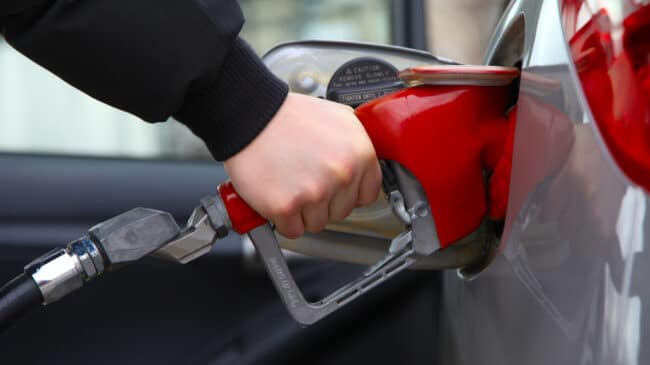The House Transportation and Infrastructure Committee’s Highway and Transit Subcommittee held a hearing on the status and future of the federal Highway Trust Fund on Oct. 18. The witnesses all agreed the current revenue-outlay imbalance was unsustainable and suggested a variety of approaches to address the long-term solvency of the Highway Trust Fund. The policy preferences expressed by members of the subcommittee were all over the map, but they were in broad agreement that reinvigorating the users-pay/users-benefit principle with a future-proof alternative to long-dominant fuel taxes was the path forward.
Chad Shirley, an economist with the Congressional Budget Office (CBO), underscored the scale of the problem. At current tax rates and baseline (i.e., increasing with the rate of inflation) spending, CBO estimates that the Highway Trust Fund (HTF) will become insolvent in 2028, in which “revenues and interest credited to the Highway Trust Fund total $43 billion, and outlays exceed revenues and interest earnings by about $39 billion.”
For the current 2024-2033 budget window, CBO projects a total accumulated shortfall of $241 billion.
The basic problem is that since 2008, Congress’ spending has exceeded the balance of the HTF, requiring ever-larger general fund bailouts to ensure the federal government can reimburse states as promised. The Eno Center for Transportation’s Jeff Davis drew attention to three main causes of this problem:
- Growth in vehicle-miles traveled (VMT) has slowed. During the initial construction phase of the Interstate Highway System from the 1950s through the 1970s, vehicle-miles traveled growth averaged 4.5% per year. But for the last two decades, VMT growth has averaged just 0.8% per year. A slower increase in travel means a slower increase in fuel consumed. And with roughly 90% of Highway Trust Fund revenue coming from per-gallon taxes on gasoline and diesel, this means a slower increase in revenue.
- Vehicle fuel efficiency has greatly improved. The energy crisis in the 1970s resulted in public and private energy conservation actions. Since then, the average fuel economy has nearly doubled, with passenger cars burning four gallons of gas per 100 miles today compared to 7.6 gallons in 1976. Pickup trucks and SUVs today burn 5.6 gallons per hundred miles compared to 9.3 gallons in 1976.
- Congress has failed to respond to these trends. Despite the changing relationship between road use and revenue, Congress has not cut spending, raised user taxes, or some combination to account for these changes.
CBO’s Shirley pointed out that increasing gasoline and diesel tax rates by 15 cents per gallon today would raise an estimated $250 billion for the HTF through 2033, barely covering the estimated $241 shortfall. And with ever-increasing fuel economy in conventional internal combustion vehicles and anticipated growth in hybrid and electric vehicle sales, a fuel tax increase is, at best, a temporary fix to the Highway Trust Fund’s revenue-outlay imbalance.
If Congress refuses to reduce spending and wishes to preserve the HTF, it will need a durable replacement for fuel taxes. The most promising solution was touted by the two other witnesses, Kris Strickler of the Oregon Department of Transportation and Reema Griffith of the Washington State Transportation Commission. Both states have examined mileage-based user fees (MBUFs) as replacements for fuel taxation for several years. Oregon—along with Hawaii, Utah, and Virginia—now has a permanent MBUF program in place, in which MBUFs will be gradually phased in.
Mileage-based user fees make a great replacement for gas taxes because they are agnostic about vehicle propulsion and instead charge directly for road use. Fuel taxes were designed to be a proxy for road-use charges because, until the 1970s, fuel consumption was correlated strongly with vehicle-miles traveled. But, improving fuel economy in new vehicles has weakened the connection between road use and fuel consumption, and that link is completely broken with electric vehicles that don’t burn motor fuel. As Griffith told the subcommittee, “We are paying by the mile today through the gas tax, we just aren’t paying the same rate.”
To be sure, many challenges lie ahead in the transition from indirect road charging through fuel taxes to direct road charging using MBUFs, from system architecture to revenue management to customer privacy. Griffith estimated that a full transition will take a decade once it begins. But if these implementation problems can be solved, the result would be a future-proof system of road revenue collection.
Today, more mileage-based user-fee pilot programs are needed to test various approaches and develop scalable solutions. To support this endeavor, Congress has authorized a technical assistance grant program to support state and local MBUF pilots, as well as a national motor vehicle per-mile user fee pilot. The U.S. Department of Transportation recently announced the creation of the federal advisory board to help design and monitor the national pilot. In the coming weeks, the Federal Highway Administration is expected to make $45 million available for state and local technical assistance grants under the Strategic Innovation for Revenue Collection program.
These two complementary MBUF programs may be getting a later start than Congress intended, but both offer great potential in finding a sustainable fix to the Highway Trust Fund’s fiscal imbalance. To ensure its legislative goals are met, Congress should carefully analyze program results as they come in and conduct robust oversight of the Department of Transportation’s implementation progress.

